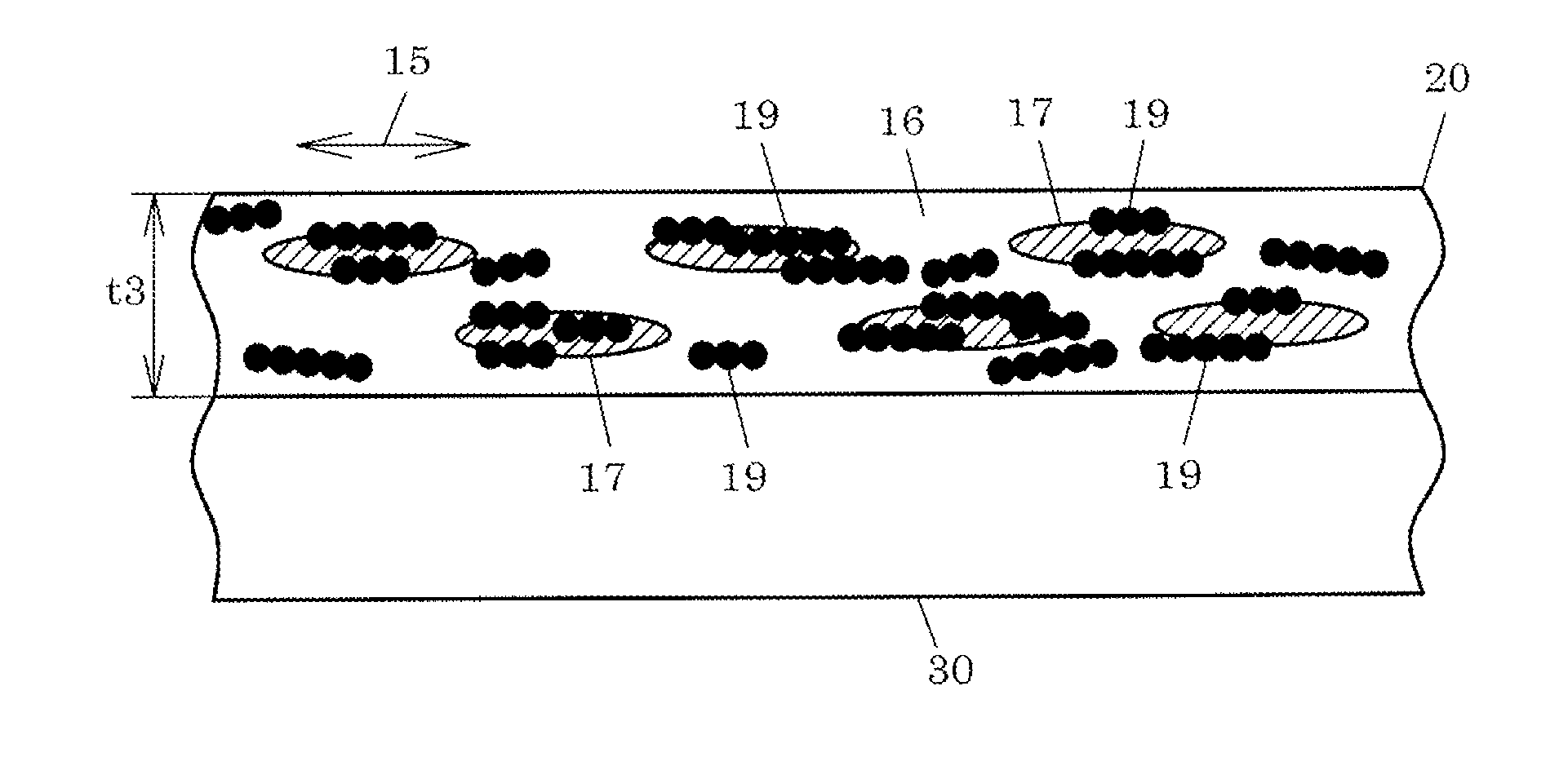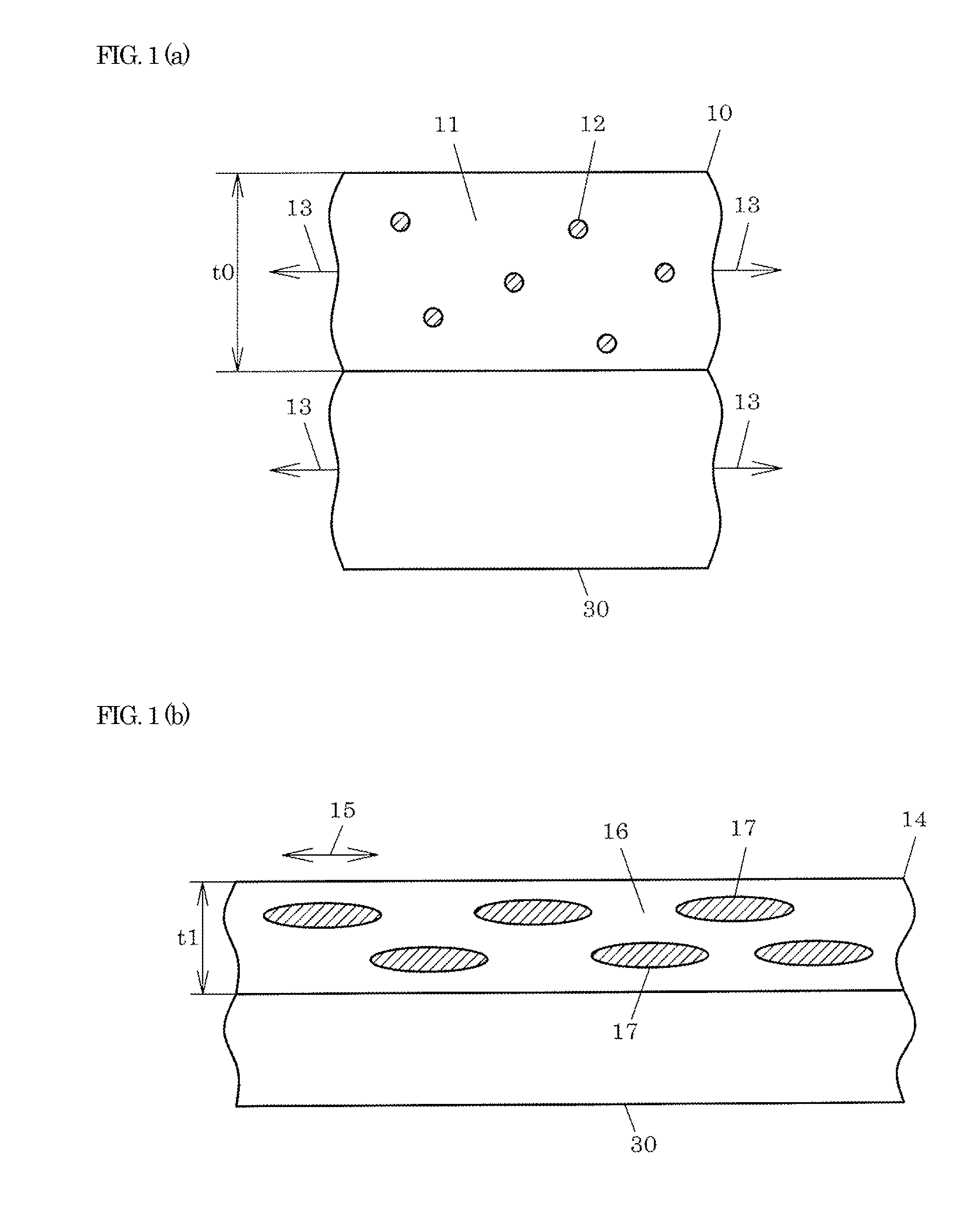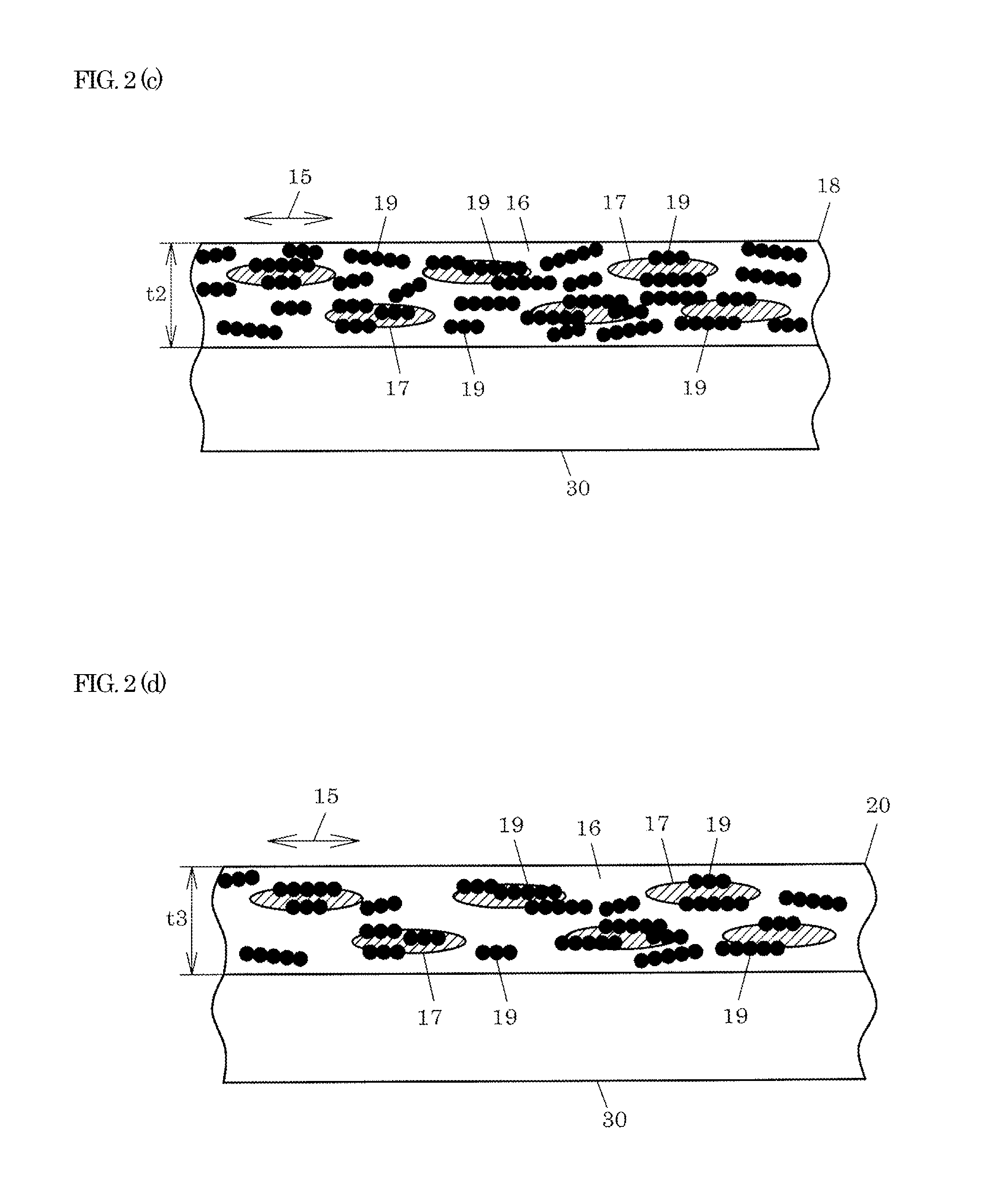Method for producing polarizer
a polarizer and polarizing element technology, applied in the field of polarizing element production, can solve the problems of low polarization degree and achieve the effect of high polarization degr
- Summary
- Abstract
- Description
- Claims
- Application Information
AI Technical Summary
Benefits of technology
Problems solved by technology
Method used
Image
Examples
example 1
[0066](1) An aqueous 7% by weight solution of polyvinyl alcohol was applied on a surface of a support made of a norbornene-based resin film having a film thickness of 150 μm (manufactured by JSR Corporation; product name: ARTON) to form a polyvinyl alcohol film. The polymerization degree of polyvinyl alcohol was 4,200, and the saponification degree thereof was 99% or more.
[0067](2) The polyvinyl alcohol film and the support were dried at 80° C. for 8 minutes to form a polyvinyl alcohol layer having a layer thickness of 7 μm on the support to obtain a laminate of the polyvinyl alcohol layer and the support.
[0068](3) Using a biaxial stretching machine manufactured by Iwamoto Seisakusho Co., Ltd., the laminate of the polyvinyl alcohol layer and the support was subjected to dry uniaxial stretching. The stretching temperature was 150° C. The stretch ratio was adjusted to the value which is 4.8 times larger than the original length. As a result of stretching, a laminate of the stretched l...
example 2
[0074]A laminate composed of a polarizer (thickness: 2.9 μm) and a support was formed in the same manner as in Example 1 except for the following points:[0075](1) The immersion time in the dyeing liquid was adjusted to set an absorbance at 0.921 immediately after dyeing.[0076](2) The immersion time in the decolorization liquid was adjusted to prepare five kinds of samples of the obtained polarizer having an absorbance of 0.359 to 0.377.
[0077]FIG. 4 is a graph of absorbance (AC) versus polarization degree of a polarizer. And FIG. 5 is a graph of absorbance (AB) versus polarization degree of a dyed layer.
example 3
[0078]A laminate composed of a polarizer (thickness: 2.9 μm) and a support was formed in the same manner as in Example 1 except for the following points:[0079](1) The immersion time in the dyeing liquid was adjusted to set an absorbance at 0.420 immediately after dyeing.[0080](2) The immersion time in the decolorization liquid was adjusted to prepare four kinds of samples of the obtained polarizer having an absorbance of 0.362 to 0.377.
[0081]FIG. 4 is a graph of absorbance (AC) versus polarization degree of a polarizer. And FIG. 5 is a graph of absorbance (AB) versus polarization degree of a dyed layer.
PUM
| Property | Measurement | Unit |
|---|---|---|
| thickness | aaaaa | aaaaa |
| transmittance | aaaaa | aaaaa |
| temperature | aaaaa | aaaaa |
Abstract
Description
Claims
Application Information
 Login to View More
Login to View More - R&D
- Intellectual Property
- Life Sciences
- Materials
- Tech Scout
- Unparalleled Data Quality
- Higher Quality Content
- 60% Fewer Hallucinations
Browse by: Latest US Patents, China's latest patents, Technical Efficacy Thesaurus, Application Domain, Technology Topic, Popular Technical Reports.
© 2025 PatSnap. All rights reserved.Legal|Privacy policy|Modern Slavery Act Transparency Statement|Sitemap|About US| Contact US: help@patsnap.com



